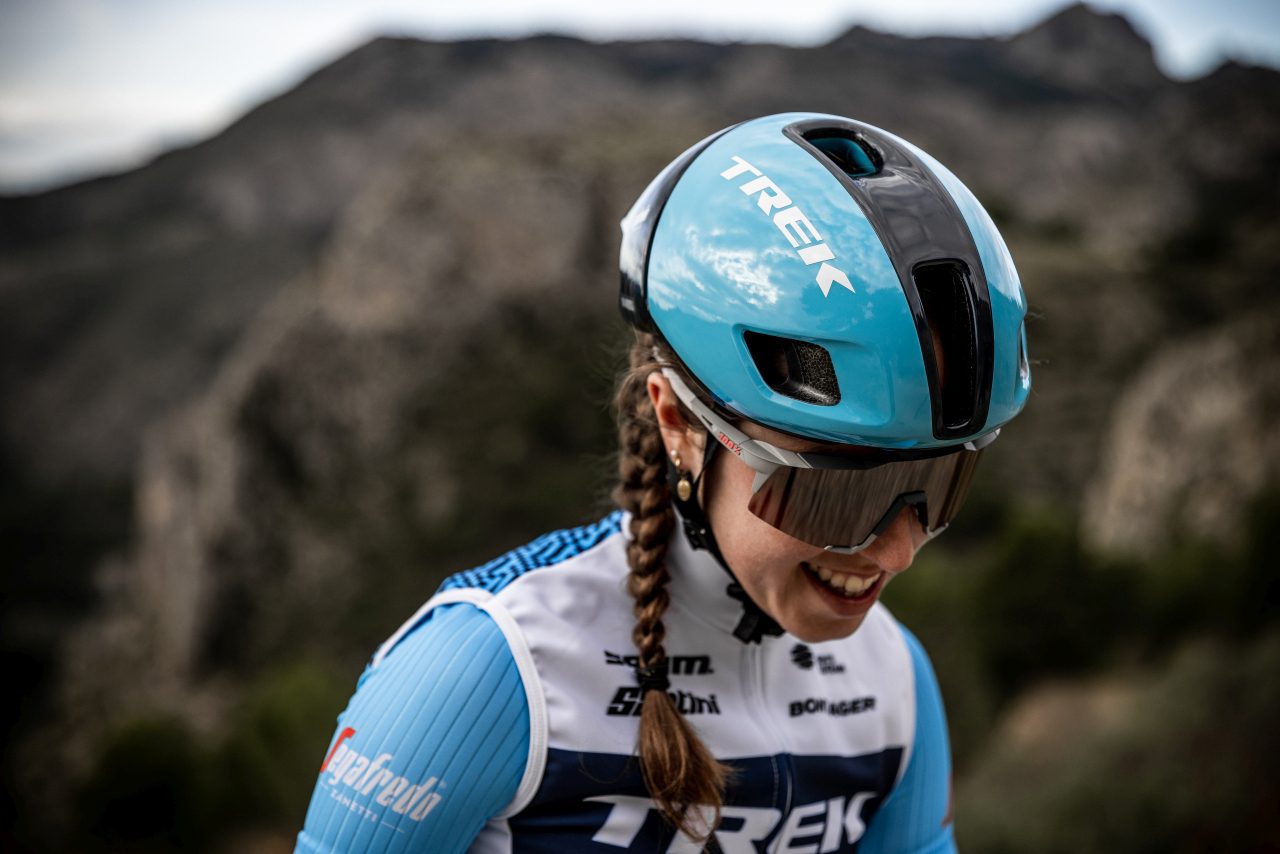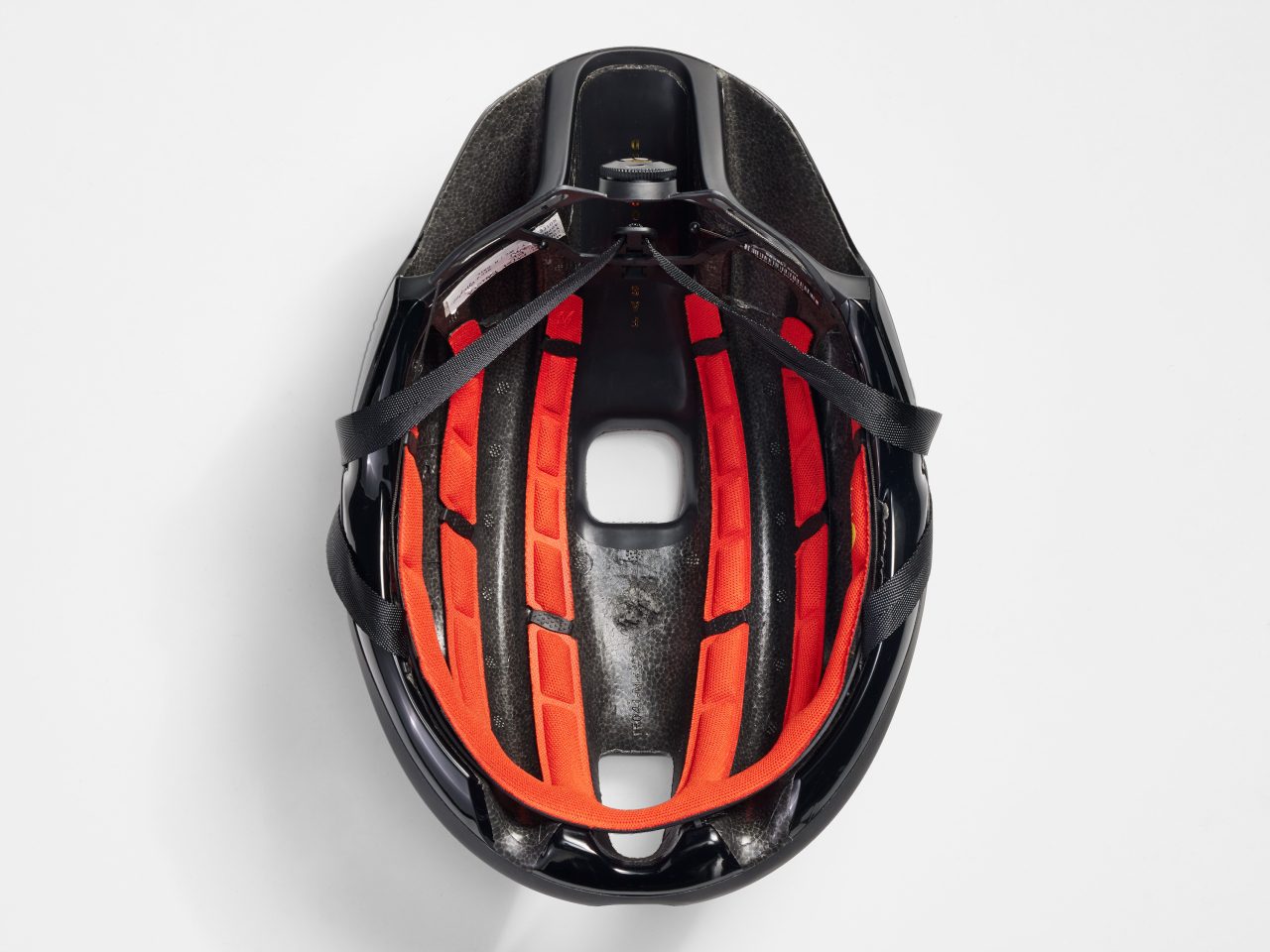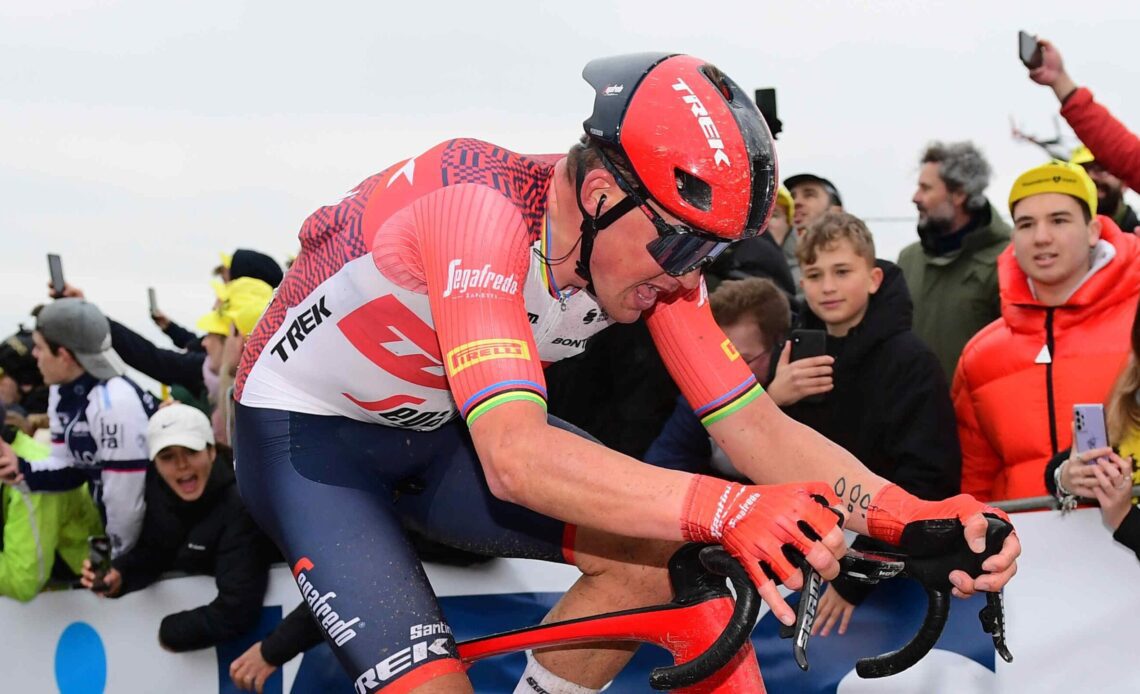Throughout Mads Pedersen’s spring campaign, the Trek-Segafredo rider has been sporting a new helmet. You no doubt got a good look at it during his 84-km in the break at the Tour of Flanders, not to mention his solo time from 30 km from the finish to the final ascent of Oude Kwaremont. It’s a sleek-looking lid.
The helmet is Trek’s second-generation Ballista. It debuts officially Thursday along with the new Velocis. Both helmets are fast and light, but each has its specialty.
Common features of the Trek Ballista and Trek Velocis helmets
Like most helmets, the Trek Ballista and Trek Velocis are made with an expanded polystyrene (EPS) foam, which provides the bulk of the protection, and a polycarbonate shell. For added protection against rotational forces that can affect a rider’s head in a crash, there’s a MIPS layer. It’s the MIPS Air, to be exact. The perforated polycarbonate layer is lighter and cooler than a standard MIPS insert. Once the pads are placed on the MIPS Air, it’s barely noticeable.
Each lid uses a Boa dial to snug up the fit system.

The Trek Velocis and Trek Ballista have bevelled front edges. This design gives you a better view of what’s ahead, even if you are in a tucked, aero position. Since helmets also double as sunglasses storage, just above that bevelled edge, the side vents feature rubber ports for a better grip on your sunnies.
Trek’s helmets have received a five-star safety rating from Virginia Tech. That institution has a facility and system for rating helmets. It recommends any lid with five—the highest rating—or four stars.
The Velocis and Ballista come in three sizes: small (51–57 cm), medium (54–60 cm) and large (58–63 cm). If either helmet is in a crash within its first year of ownership, Trek will send a replacement. The cost of each helmet is $400.
Wait. MIPS? Not WaveCel?
In 2019, Trek introduced WaveCel, a collapsible cellular material, on four of its helmets. It’s since expanded to other lids in the Trek/Bontrager lineup. WaveCel does the same job as a MIPS layer—lessen the effects of rotational forces—but it also absorbs linear forces. Since low weight and efficient cooling were priorities for the Velocis and Ballista, Trek opted for MIPS Air, which allows for better air movement and adds fewer grams than WaveCel.

Click Here to Read the Full Original Article at Canadian Cycling Magazine…

